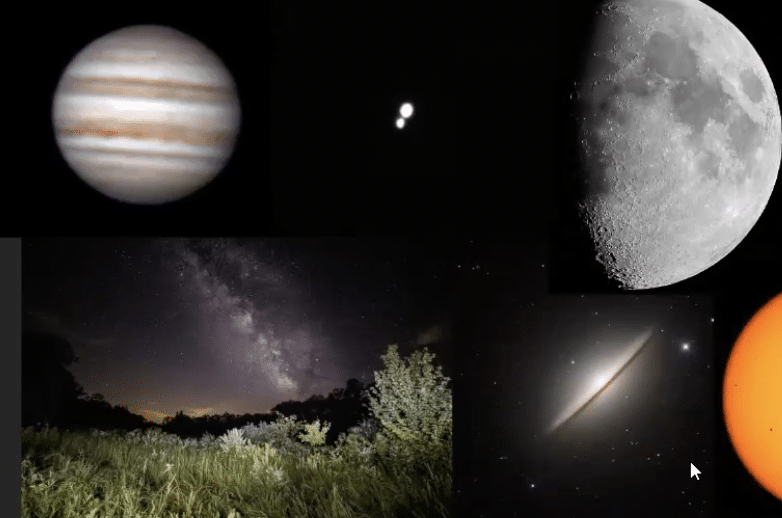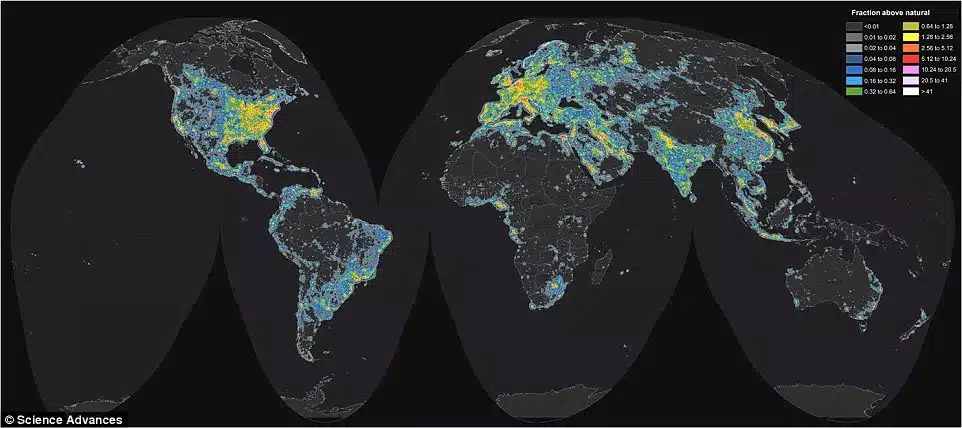
By Katie Borgfjord, Digital Marketing Coordinator
How do you read a star chart? Is a telescope really necessary? When and where can you spot the Milky Way?
That’s what we learned from the Royal Astronomical Society of Canada Webinar, hosted by CPAWS Manitoba in August 2022.
Lauren Knowles and Samantha Jewett of the Royal Astronomical Society of Canada share useful tips and tricks for beginner astronomers, including the technique of star-hopping, measuring the night sky, and which key objects to search for.
Samantha highlights the different types of objects to look for in the summer sky and introduces RASC’s Explore the Universe program—a free program great for beginners!
You’ll also learn how light pollution affects our view of the night sky and its wider impacts on ecosystems and human health, and how RASC’s Dark-Sky Site program contributes to the protection of ecosystems and dark skies throughout Canada.
Want to learn more? Check out the CPAWS Manitoba webinar all about astronomy.
What do you need to get started?
- Clear dark skies
- Unaided eyes
- A starfinder map
- A red light (to see map, but does not affect night vision)
Tools and Tricks
Step 1: Start by Star hopping
Using recognizable bright stars as a guide to find other targets. Most people start with the biG dipper, a cluster of stars that resemble a spoon! The tip of the big dipper also points directly to the north star, and helps us orientate ourselves in the sky! Now the next star! Look at the handle of the big dipper and follow an arc shape, arc to arcturus!
Step 2: How to Find Stars
- Use a Star Finder (analog device)
Get a star finder, print one for free online!
Turn the wheel to match the time and date you want to observe. Now you have a simplified view of the night sky!
- Use Online Software
Download a free digital planetarium software. This created a simulated view of the night sky through software for any day, time, or location! Look on your computer with Stellarium, on your Android with Skymap, or on your iPhone with StarChart. Make sure to put your device in night mode, this preserves your night vision!
What to Look For in The Sky!
- The moon
Find the moon in the evening sky, on the first 14 days after the new moon. It’s easier to see things on the moon when it’s not full (a full moon is too bright). Look along the day-night line, called the terminator! On the moon you can see craters, maria (dark spots created by asteroid impacts), and mountains!
- Summer Constellations and Asterisms
These are the recognizable patterns in the night sky. An amazing resource is the Ojibwe Sky star map Constellation guide! Find more resources on nativeskywatchers.com
- Some others to look for!
- Hercules
- Sagittarius (looks like a teapot)
- Scorpius
- Deep sky Objects (DSOs)
- Non-stellar objects outside our solar system.
- Examples are nebulae, double stars, galaxies, and star clusters.
Equipment You Need to Observe
RSAC recommends that beginners start with binoculars (RSAC recommends a 10x 50). Learn the night sky first and what you are interested in looking at, then infvest in a telescope.
Everything listed above can be seen with the naked eye (in clear dark skies), and with binoculars!
Get to Know Light Pollution!
What is it?
The inappropriate or excessive use of artificial light. Examples are a glow in the sky, a cluster of signs, or the glow of a greenhouse.
Did you know that 80% of North Americans cant see the milky way, due to light pollution.
Why should we care?
- Culture
It impacts our night sky and it’s harder to see the stars. The stars have been used for thousands of years for observing, navigation, agriculture, time keeping, and religious/cultural experiences.
- Human Health
Light pollution and artificial light affects our circadian rhythm (sleep/wake cycle) with affects our overall health and wellness of our bodies. That’s why it’s not recommended to look at your devices before going to bed, the light affects your rhythm, and your bodies ability to produce melatonin (which makes you sleepy).
- Environment
Birds who migrate at night use the light from the moon to find their way. Our lights confuse birds and lead to collisions.
Female sea turtles nest and lay their eggs on beaches, but they won’t nest if the beach is too bright. Once the turtles hatch, they use the moonlight to guide themselves into the water. Our artificial light disorientates them.
Having artificial light outside confuses the system of plants as well, they aren’t aware of the season changes, and aren’t prepared when the temperature drops.
How to Take Action!
- Individual Quick Actions
- Turn off non-essential lights
- Use motion sensor or timed lights
- Close blinds after dark
- Aim lights downward
- Shield lights
- Choose warmer coloured bulbs (produces less pollution than blue light)
- Bigger Actions
- Creating lighting bylaws and policies
- Creating Protected areas
How RSAC Dark-Sky Program Helps!
- Celebrates dark skies across canada.
- Increasing public awareness of the impacts of light pollution.
- Expanding Canada’s network of sites that protect dark skies and nocturnal environment.
About The Royal Astronomical Society of Canada
Founded in 1868, The Royal Astronomical Society of Canada is Canada’s leading astronomy organization, bringing together over 5,000 enthusiastic amateurs, educators, and professionals. In addition to many national services, the organization’s 30 Centres offer local programs across Canada.
To learn more, visit rasc.ca.
About CPAWS Manitoba
CPAWS Manitoba has been instrumental in establishing 22 new parks and protected areas in our province. That’s an area larger than Lake Winnipeg at nearly 26,000 square kilometres. Our goal is to protect half of Manitoba’s lands and waters.
How can we help?
If you have any questions or require any additional accommodations to participate, please email us at [email protected].
The views and opinions expressed are those of the presenters and do not necessarily reflect the views, policies, or positions of CPAWS Manitoba.
You can register on Eventbrite and catch up on past webinars on Vimeo. And don’t forget to subscribe to our events newsletter so you get invited to upcoming webinars

